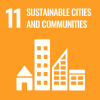
INTRODUCTION
Climate change is the defining issue of our time, and we are at a critical moment. It intensifies heatwaves, droughts, flooding, wildfires and famines, while threatening to submerge low-lying countries and cities and drive more species to extinction. It also threatens food supply and food security. The Climate Change 2023 Synthesis Report of the IPCC1 highlights the unequal contributions to global greenhouse gas emissions, driven by unsustainable energy and land use, as well as consumption patterns. Human-caused climate change is already impacting weather extremes globally, leading to widespread adverse impacts, especially affecting vulnerable communities.
Tackling climate change demands a paradigm shift in mitigation and adaptation measures, policy coherence, institutional arrangements, and coordination across national, regional, and local levels. Multilevel governance, including commonly used strategies to operationalize the principle of subsidiarity, is foundational to the global effort to combat climate change, recognizing that effective action requires collaboration and coordination across various levels of government, as well as with non-state actors. The principle of equity needs to be applied to the design of existing multilevel governance arrangements for addressing climate change, particularly when costs and benefits are often highly concentrated. It emphasizes the importance of considering equity in decision-making processes and the allocation of resources to address climate change effectively and fairly.
MULTILEVEL GOVERNANCE FOR CLIMATE CHANGE MITIGATION AND ADAPTATION
Climate change affects rural communities directly through reductions in agricultural production and indirectly through effects on non-farm incomes and food prices, causing migration to cities. Climate change impacts cities with frequent extreme weather, heatwaves, sea level rise, and food and water insecurity, affecting infrastructure and resident well-being. The Paris Agreement recognizes subnational actors and local governments as key stakeholders in driving strong climate action. The New Urban Agenda (NUA) emphasizes urban areas as key to climate action and advocates for multilevel governance to support local efforts in implementing the 2030 Agenda, the Paris Agreement, the Sendai Framework, and other international agreements.
Effective multilevel governance is essential for empowering local climate action. It includes political commitment, vertical integration of national policies with local action, along with mitigation and adaptation plans. It also requires vertical coordination among all government levels and stakeholders, including civil society, community organizations, and the private sector and horizontal coordination within and amongst governments at the same level as well as coordination with and amongst non-State actors. An important aspect of horizontal coordination is cross-border collaboration among neighboring local governments, stakeholders, and civil society, including inter-municipal and regional cooperation, networks, city twinning, and partnerships.
The Paris Agreement emphasizes the importance of equity by calling for actions that reflect the principle of common but differentiated responsibilities and respective capabilities. At the global level, equity considerations encourage developed nations to support developing countries through financial and technological aid, addressing the asymmetries in contributions and impacts of climate change. This is particularly important for vulnerable small island developing states (SIDS), which are disproportionately affected by climate change despite contributing the least to its causes. Integrating equity into national and local climate policies ensures the inclusion of vulnerable communities’ needs and voices, promoting inclusivity and social justice, reducing vulnerability, enhancing resilience, and fostering a more effective and sustainable response to climate change by sharing the burdens and benefits of climate action.
POLICY COHERENCE AND LOCAL-NATIONAL CLIMATE POLICY LINKAGES
One important mechanism for effective implementation of climate change mitigation and adaptation plans at the national and local levels is policy coherence—coordinated policymaking across goals and objectives to maximize synergies and navigate potential trade-offs, which hinges on negotiating effective coordination among stakeholders in multilevel governance systems. The UN CEPA strategy guidance notes on promotion of coherent policymaking distinguishes several complementary dimensions of policymaking that result in coherent policy practice. These include horizontal coherence within sectors, vertical coherence between local, national, and international levels, and international coherence across different countries’ policy domains to address transboundary spillover effects. The CEPA strategy guidance note on enhancement of local capacity for prevention, adaptation and mitigation of external shocks underscores the importance of policy coherence and integrated planning in enhancing local resilience to external shocks by aligning policies, strategies, and actions across various sectors and governance levels for a coordinated response.
National, regional and local governments should initiate policy coordination processes to help them define how to move from short-term objectives to long-term targets and identify what role the different levels should play. Such processes should also aid in identifying the concrete measures to be taken at different levels to ensure an enabling environment conducive to climate action. There are different approaches to policy coherence for climate change mitigation and adaptation.
At the international level, global frameworks like the 2030 Agenda, the Paris Agreement, and the Sendai Framework are interconnected, requiring improved understanding of their interactions to manage conflicts among economic, social, and environmental policy objectives.
Nationally led “top-down” policies, such as carbon taxes10 and cap-and-trade regulations, are designed by central governments to encourage local climate action, requiring local authorities to align with national climate priorities.
Learning from the “bottom-up” policies: The “bottom-up” model encourages local authorities to exceed national climate requirements, with successful local programmes informing higher-level policymaking and coexisting with “top-down” approaches to shape comprehensive climate action.
In a hybrid policy model, national and regional governments collaborate with local authorities to foster local climate innovation and broadly implement successful strategies, ensuring policy coherence, intergovernmental coordination, and integrated climate action planning across all government levels.
Type II jurisdictions: Apart from the classical multilevel structure (often called Type I multilevel governance), a second type of multilevel governance, consisting of many specialized jurisdictions (Type II jurisdictions), has emerged to tackle particular policy problems and performing a very specialized task. These jurisdictions are “quasipublic” entities usually established by multiple local or regional governments and supervised by an appointed board, commission, or committee. Usually, Type II jurisdictions are integrated within the broader and more traditional Type I jurisdictions, as they derive their legitimacy from the governance structures of their popularly elected governments. Figure 1 illustrates this relationship.
Type II multilevel governance proves especially valuable for climate action. Its targeted, adaptable, and collaborative approach tackles the geographically complex and everchanging challenges that often span multiple jurisdictions. This is particularly relevant for cities facing climate-related issues that require specialized solutions across various regional boundaries.
INSTITUTIONAL ARRANGEMENTS FOR CLIMATE CHANGE MITIGATION AND ADAPTATION
Coherent and integrated climate action offers clear benefits, but it requires strong political commitment and effective institutional arrangements. Different ministries or departments are typically responsible for different policy issues such as National Adaptation Plans (NAPs) and Nationally Determined Contributions (NDCs) are generally led by environment ministries, SDGs by planning or economic ministries and line ministries on water, agriculture, infrastructure, among others. Institutional linkages should be established between these various stakeholders including the local government to enhance coordination at all stages from planning to reporting for a more synergetic implementation of climate mitigation and adaptation action at all levels. The most common institutional arrangement for multilevel governance is the creation of inter-governmental bodies with multistakeholder representation.
While national political commitment and leadership are key, given the governance structures of most countries, responsibility for actual implementation of climate action lies with local institutions. This longstanding challenge has been faced by many countries striving to meet climate change commitments when national visions and strategies are not aligned with local actions and priorities. Effective climate action with various cross-cutting issues requires institutional collaboration from national to local levels, innovation and incentive systems that facilitate action and accountability across sectors as well as across governance levels.
Beyond national institutional arrangements, fostering collaboration among local authorities can enable the scaling up of innovative practices and programmes through peer-to-peer learning and information sharing. Collaboration with other city governments can potentially deliver significant advantages, especially for small and mid-sized municipalities with limited access to financing, lower capacity and less political clout. For example, Algeria has created community-level committees to coordinate the implementation of sustainability objectives. By pooling resources through such institutional arrangements and collaborating on the procurement of goods and services, local governments can more effectively finance and manage expensive and complex climate action projects.
MULTI-STAKEHOLDER ENGAGEMENT FOR CLIMATE CHANGE MITIGATION AND ADAPTATION
Multi-stakeholder engagement in climate action improves the quality of policies, plans and actions, promotes compliance, and ensures that strategies respond to the real needs of individuals and communities. It can also help to tackle societal inequality on climate vulnerability, build public support for innovative measures and practices, minimize unintended consequences resulting from climate change and can complement government resources by increasing community-led action.
Multilevel governance can involve different types of engagement through the combination of public and nonstate and private actors. Engaging a wide representation of stakeholders ideally should be done from the design phase of climate action initiatives. Therefore, national and local governments should consider analyzing the quality of stakeholder engagement in the implementation and follow-up to climate change mitigation and adaptation and provide multiple means for stakeholder feedback. To ensure an inclusive stakeholder plan, at an early stage in the process, local governments need to identify potentially affected minorities and invite the participation of vulnerable and marginalized groups. This comprehensive list of invitees will provide additional inspiration and ideas on how to be more transformative for a wider range of beneficiaries. The means to engage these individuals/groups should be appropriate to each context by considering language and format of engagement.
Special attention should be paid to the role of Indigenous peoples and their knowledge, the climate risks and impacts they face, and the value in ensuring their inclusion across traditional knowledge, dialogue, planning, and action. Indigenous knowledge is necessary to identify priority areas to be protected, to ensure the preservation of Indigenous ways of life and food security, and to mitigate climate change. For example, a partnership formed between the Nature Conservancy of Canada and the Cree Nation Government exemplifies how utilizing both traditional knowledge and conservation science can inform conservation policy decisions that respect Indigenous rights.
POLICY RECOMMENDATIONS ON MULTILEVEL GOVERNANCE FOR CLIMATE CHANGE MITIGATION AND ADAPTATION
- Strengthen multilevel governance for climate action by enhancing vertical and horizontal coordination among government levels, stakeholders, civil society, community organizations, and the private sector. Foster inter-municipal and regional cooperation, networks, and partnerships to maximize local resilience against climate change impacts and encourage knowledge sharing to inspire further collaboration across all concerned parties.
- Integrate the principle of equity into all levels of climate governance by ensuring developed nations provide financial and technological support to developing countries. This approach should be mirrored at national and local levels to include vulnerable communities in climate policies, thereby promoting inclusivity, reducing vulnerability, and enhancing resilience.
- Foster policy coherence and local-national climate policy linkages by initiating policy coordination processes across all levels of government to maximize synergies and navigate potential trade-offs. Encourage collaboration between international, national, regional, and local authorities for a sustainable and resilient future.
- Establish robust institutional arrangements for climate action by creating inter-governmental bodies with multi-stakeholder representation and enhancing coordination between various stakeholders, including local governments. Strengthen collaboration among national and local authorities, fostering peer-to-peer learning, and scaling up innovative practices. Facilitate effective climate action at all levels by aligning national visions and strategies with local priorities, while promoting institutional collaboration, innovation, and incentive systems across governance levels and sectors.
- Enhance multi-stakeholder engagement for climate action by involving public, non-state, and private actors, focusing on inclusivity from the design phase of initiatives. Ensure the participation of vulnerable, marginalized groups, and Indigenous peoples by recognizing the value of traditional knowledge in planning and action.
 Welcome to the United Nations
Welcome to the United Nations



